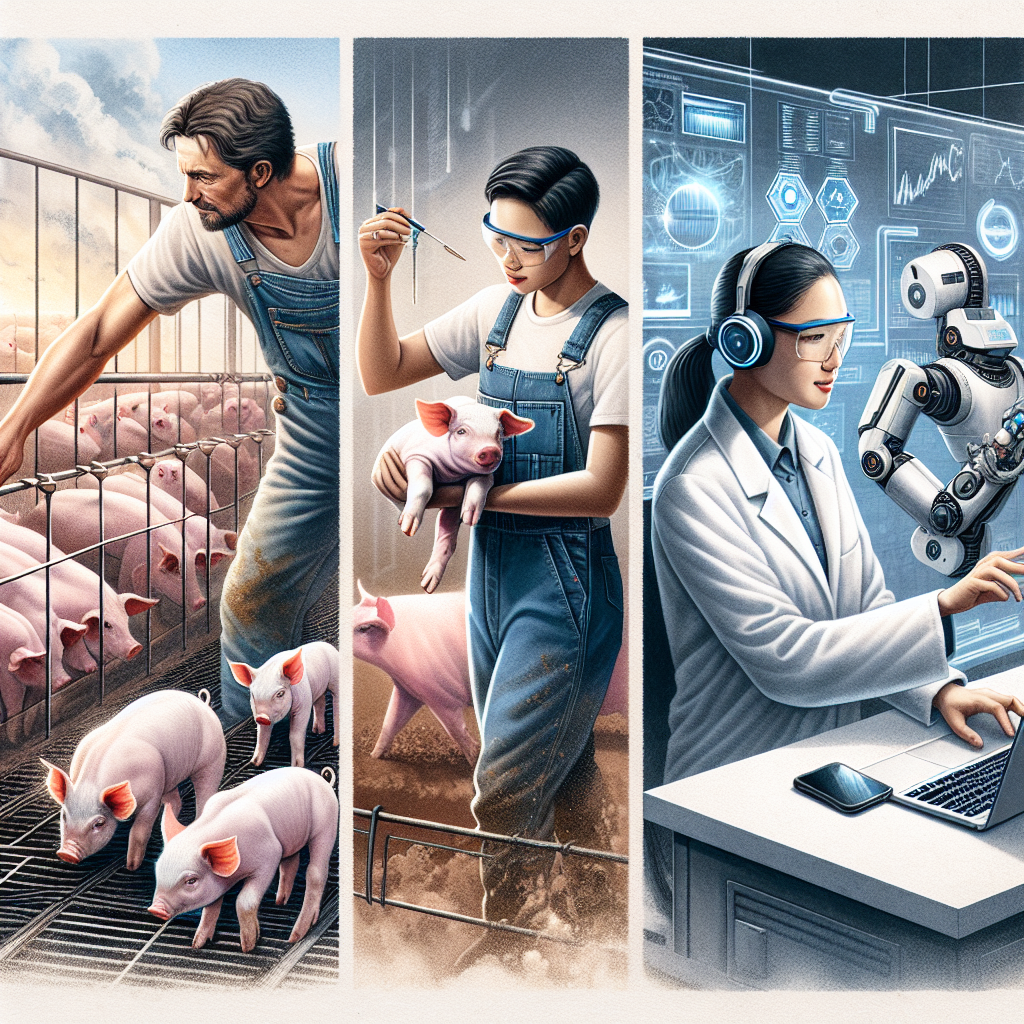Harnessing AI: From Artificial Insemination to Artificial Intelligence in the Pork Industry
The pork industry, essential for its contributions to global food security and economy, is undergoing a technological renaissance with the incorporation of artificial intelligence (AI). This blog explores how AI is revolutionizing the pork industry from the early days of artificial insemination to its modern applications in data management and decision-making processes.
Understanding the Transformation
Artificial insemination, commonly referred to as “AI” in livestock management, has been a cornerstone in modern breeding practices for over a century. This method not only enhances genetic diversity but also mitigates risks associated with natural mating, such as disease transmission. Today, the notion of AI extends beyond breeding to encompass machine learning and advanced data technologies that reshape how pork producers operate.
As technology has advanced with big data, cloud computing, and the Internet of Things (IoT), the integration of artificial intelligence in swine production enables farmers to make informed decisions, enhance productivity, and adopt sustainable practices. By leveraging these technologies, producers can analyze vast amounts of data swiftly, identifying trends that were previously undetectable.
Major Use Cases of AI in the Pork Industry
1. Predictive Analytics for Health Monitoring
AI technologies harness large datasets to predict health issues in pigs before they manifest. Using data from sensors that track an animal’s behavior and body temperature, farmers can receive alerts on potential health issues, safeguarding animal welfare and minimizing disease outbreaks. This proactive approach not only improves the quality of life for the animals but can significantly reduce economic losses for farms.
Illustration: A study shows a significant reduction in disease outbreaks on farms employing AI-driven analytics, dropping incidence rates by as much as five-fold compared to non-AI methods. This proactive stance is supported by projects like the Proactive Pig Project, which aims to mitigate health risks using predictive technologies.
2. Optimizing Feed Efficiency
By analyzing growth rates, body weight, and feed prices, AI algorithms help optimize feeding strategies. This ensures that pig producers meet nutritional needs economically, thus enhancing profitability and sustainability. The shift in feeding strategies can play a pivotal role in not just supporting animal health but also driving down the carbon footprint associated with feed production.
Illustration: Farms using AI to optimize feed reported a 15% improvement in feed conversion efficiency, leading to significant cost reductions and better growth outcomes. This increased efficiency ultimately translates into lower production costs and improved profit margins for producers.
3. Enhancing Breeding Decisions
AI in genetics allows farmers to strategize better breeding plans by analyzing past performance data of sows and boars. Machine learning algorithms identify desirable traits linked to higher fertility, meat quality, and disease resistance, refining genetic selection processes for continual herd improvement. This shift not only boosts productivity but also contributes to the overall health of pig populations.
Illustration: Some leading operations report a productivity increase of over 20% thanks to AI-assisted genetic analysis, signifying the potential of AI to enhance breeding outcomes in the industry significantly.
Implications for Investors and the Market
The integration of AI signifies transformative investment opportunities in the pork industry. By increasing efficiency and decreasing waste, the end product becomes more attractive to sustainability-focused consumers. Companies leveraging AI in their operations may see notable stock value growth due to these advancements.
Financial analysts are closely watching regulatory changes that support modernization efforts, especially regarding animal welfare and food safety. As AI proves beneficial in these realms, a surge in investment in technology solutions is anticipated.
Moreover, the market for AI in agriculture is projected to grow significantly, with current estimates indicating a 6.5% annual growth rate. By 2030, the pork meat market alone is expected to reach USD 456.32 billion, making investments in agricultural tech companies particularly promising for long-term growth.
Conclusion
Artificial intelligence has redefined the pork industry, creating a shift from basic breeding techniques to comprehensive data management and operational efficiency. The future of pork production lies in sustainable practices and a commitment to innovation. This technological evolution presents an unprecedented opportunity for individuals and businesses in the pork industry to thrive in an increasingly competitive landscape.
Multimedia Enhancements
To elevate the blog post’s engagement, consider implementing the following multimedia elements:
-
Infographics: Create visuals illustrating the growth of AI applications in the pork industry, presenting statistics on health monitoring outcomes, feed optimization success rates, and the economic benefits of enhanced breeding decisions.
-
Data Visualizations: Include charts depicting the market growth trends for AI in agriculture and projections specifically for the pork sector, allowing readers to visualize potential growth areas.
-
Quotes from Experts: Incorporate notable quotes from industry experts sourced from reputable articles like “4 Areas AI Could Benefit Pork Industry” and “Artificial Intelligence in the Swine Industry.” This will add credibility and depth to the claims made in the blog.
By employing these engaging elements and informative content, this blog will serve to educate the audience while highlighting the significant advancements that AI brings to the pork industry.
